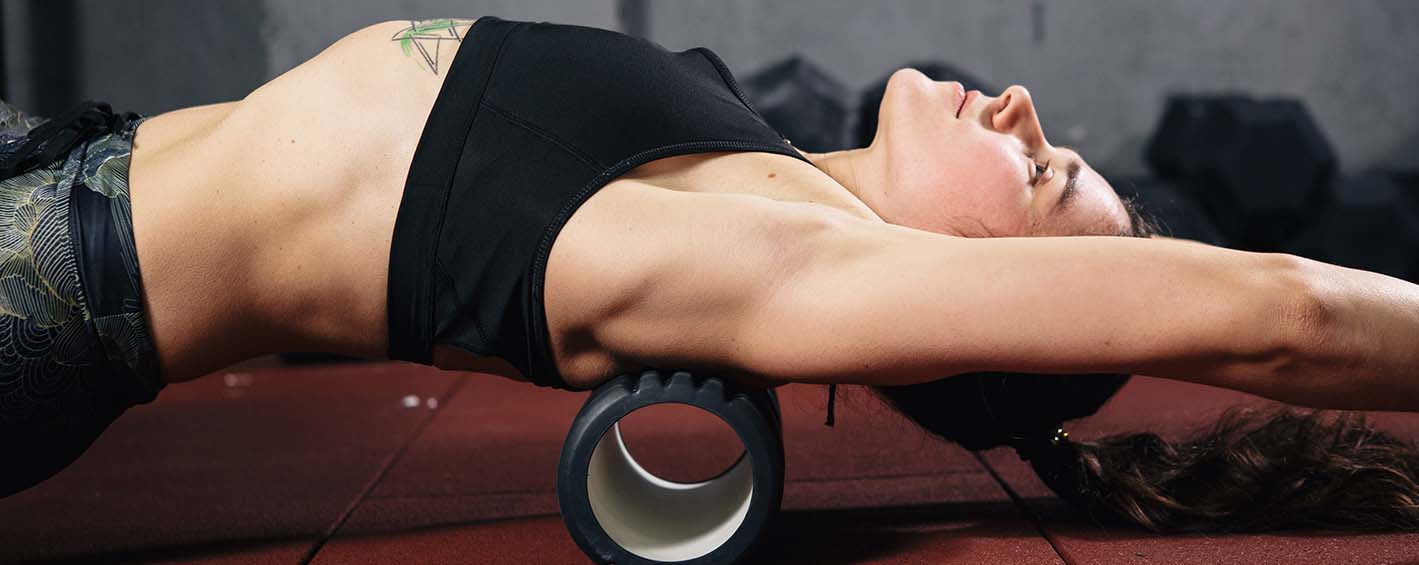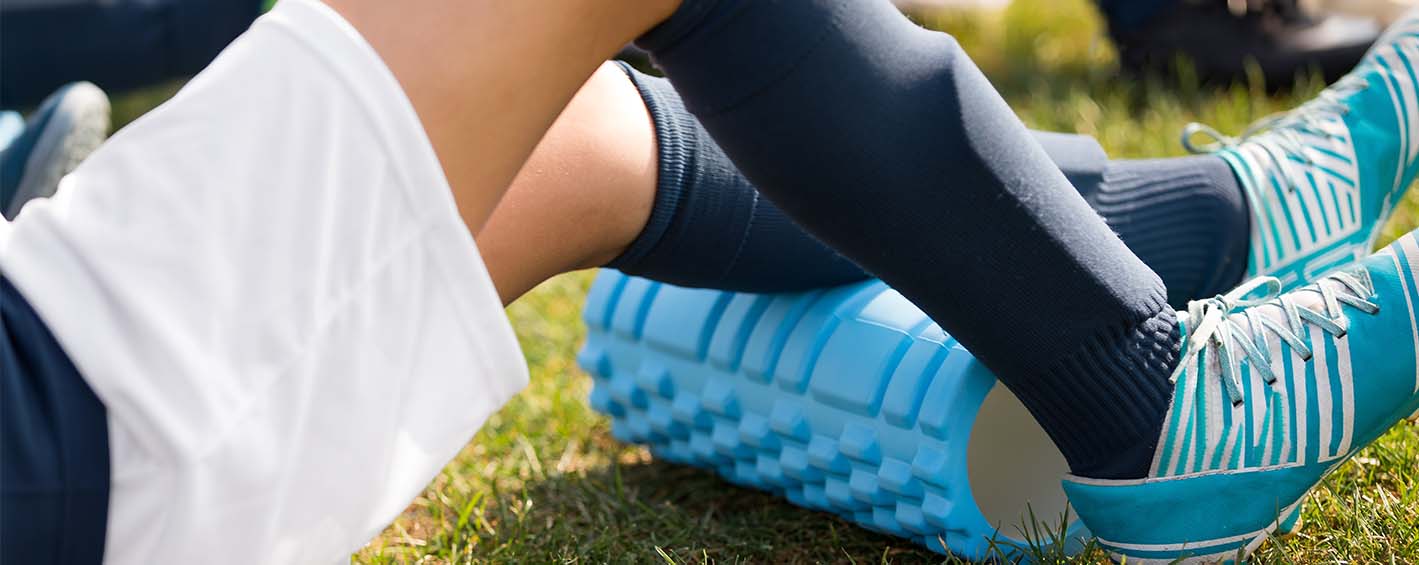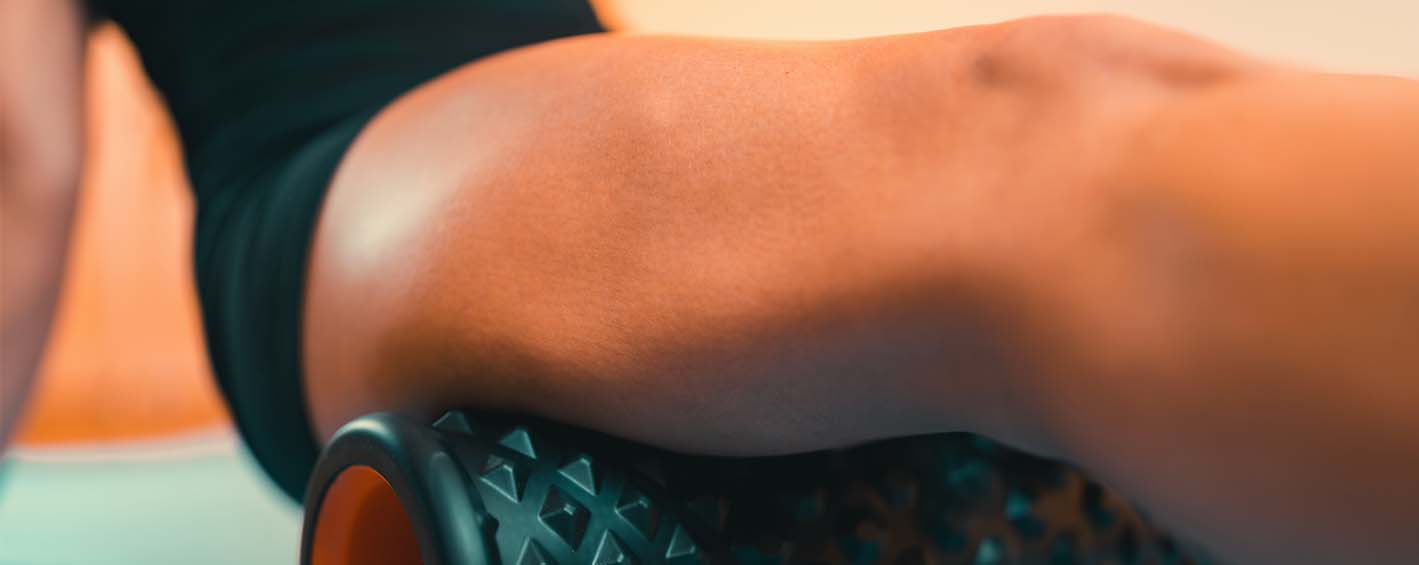Share it
More and more soccer players – grassroots, recreational/Sunday league – have been getting info online to help with their injuries and fitness. In this article our Cupello expert explores foam rolling.
Foam rolling can be an effective tool to add to your warm-up or cooldown, before and after exercise. And the benefits of foam rolling may vary from person to person.
Foam rollers were originally used by practitioners that followed the Feldenkrais method of treating the body. Moshe Feldenkrais, a physicist and martial artist, learned to decrease pain in his knee and improve his athletic performances after paying conscious attention to how his body moved. Whilst it’s effectiveness has been questioned in recent years , there are those who swear by the Feldenkrais method in helping their own ailments.
Early practitioners used the rollers as a way of providing support to the body and would get their patients to stand on the rollers during balance exercises. Use of rollers progressed over the years. In 1987, their use as a self-massage tool was pioneered by physical therapist Sean Gallagher.
They are now used by millions of people across the globe, including gym goers, weightlifters, gymnasts, athletes and many others, as a tool to massage and release tight muscles.
Some of the benefits of foam rolling
- Reducing muscle pain (including the management of certain pain syndromes like fibromyalgia)
- Increasing range of motion around a joint
- Making muscles more responsive to stretching
- Relaxation
- It’s a relatively safe way to self-massage tight muscles
1. Ease muscle pain
Foam rolling can be beneficial for easing sore muscles and reducing inflammation.
One small study Trusted Source of eight male participants found evidence that foam rolling after exercise may help reduce delayed-onset muscle soreness. In the study, physically active men foam rolled for 20 minutes immediately after exercise in addition to 24 and 48 hours after exercising.
These participants saw a decrease in their delayed-onset muscle soreness when compared to exercising without foam rolling. They also performed physical exercises better than those who didn’t foam roll. More research is needed in a larger, more diverse group of people to confirm how foam rolling impacts on muscle pain.
2. Increase range of motion
Foam rolling may help increase your range of motion, but more research is needed. Range of motion is important for flexibility and performance.
3. Relieve back pain
SMR may be effective Trusted Source for easing pain in the body. It may help ease tension in the back, too.
Foam rolling can be done on a daily basis on any muscle group. It’s most effective when it’s utilized on a consistent basis. To better prepare for a training session, I recommend rolling out before exercising to reduce muscle tension and increase blood flow. It can also be done after a session to limit the amount of muscle soreness and stiffness.
If you struggle with sleep due to aches, foam rolling prior to bedtime may decrease the stress and tension from the day to aid in getting a better night's sleep.

Negative aspects of foam roller use
Due to their widespread availability, foam rollers can be purchased by anyone, even though they may not be a suitable tool to use for that particular person. There are certain conditions and circumstances where use of a foam roller could be detrimental or damaging to a person’s body.
Foam rolling exercises load and stress the underlying tissues, including nerves, skin receptors, blood and lymphatic vessels, as well as bones. People with conditions including advanced diabetes mellitus, lymphedema, varicose veins and severe osteoporosis should avoid this form of exercise, unless advised otherwise by a medical professional.
The practice of foam rolling only produces temporary effects on the muscles and is only one aspect of keeping your tissue healthy. For long-term changes and to improve your game, it is recommended that players undertake movement and strength work.
To help improve your performance and muscle recovery time, it’s necessary to be consistent with movement, drink plenty of water, get adequate sleep, and eat healthy and nutritious foods.
Some recreational players don’t recognise this and have become accustomed to using a foam rolling before/after a match and before/after training.
When recovering from a muscle strain, a foam roller may be a handy thing to have around, but rolling over a torn muscle should be avoided in the early stages of injury and until you’ve been given the all-clear by your therapist. Rolling over an acutely torn muscle could hinder the repair of the muscle and at the very least would be incredibly uncomfortable and painful.
Have a tender spot? Foam rolling may cause some discomfort in certain areas that are extremely stiff. Targeting a specific muscle for five to 30 seconds, you should feel the tenderness of the area dissipate. It’s not advised to roll over known injuries or joint areas without a qualified medical professional’s permission.

Conclusion
The evidence suggests that foam rolling can benefit players and positively impact on muscle tissue. However amateurs and recreational players will treat it as a “magic bullet”; they may overuse the foam roller, apply it inappropriately and fail to use it in conjunction with other strategies like stretching, nutrition, and strength training to get it’s maximum benefit.
